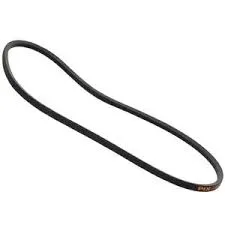- Arabic
- French
- Russian
- Spanish
- Portuguese
- Turkish
- Armenian
- English
- Albanian
- Amharic
- Azerbaijani
- Basque
- Belarusian
- Bengali
- Bosnian
- Bulgarian
- Catalan
- Cebuano
- Corsican
- Croatian
- Czech
- Danish
- Dutch
- Afrikaans
- Esperanto
- Estonian
- Finnish
- Frisian
- Galician
- Georgian
- German
- Greek
- Gujarati
- Haitian Creole
- hausa
- hawaiian
- Hebrew
- Hindi
- Miao
- Hungarian
- Icelandic
- igbo
- Indonesian
- irish
- Italian
- Japanese
- Javanese
- Kannada
- kazakh
- Khmer
- Rwandese
- Korean
- Kurdish
- Kyrgyz
- Lao
- Latin
- Latvian
- Lithuanian
- Luxembourgish
- Macedonian
- Malgashi
- Malay
- Malayalam
- Maltese
- Maori
- Marathi
- Mongolian
- Myanmar
- Nepali
- Norwegian
- Norwegian
- Occitan
- Pashto
- Persian
- Polish
- Punjabi
- Romanian
- Samoan
- Scottish Gaelic
- Serbian
- Sesotho
- Shona
- Sindhi
- Sinhala
- Slovak
- Slovenian
- Somali
- Sundanese
- Swahili
- Swedish
- Tagalog
- Tajik
- Tamil
- Tatar
- Telugu
- Thai
- Turkmen
- Ukrainian
- Urdu
- Uighur
- Uzbek
- Vietnamese
- Welsh
- Bantu
- Yiddish
- Yoruba
- Zulu
नोभ . 24, 2024 10:49 Back to list
timing belt use in car
The Importance of Timing Belts in Automobiles
The timing belt is a crucial component in modern vehicles, playing a vital role in the engine’s operation. Understanding its function, maintenance, and the implications of potential failure is essential for any car owner.
What is a Timing Belt?
A timing belt is a rubber belt with toothed edges that synchronizes the rotation of the crankshaft and camshaft(s) in an internal combustion engine. This synchronization is essential because it ensures that the engine's valves open and close at the correct intervals during each cylinder's intake and exhaust strokes. In simple terms, the timing belt keeps the engine’s components in harmony, enabling it to run smoothly and efficiently.
Function of Timing Belts
The primary function of a timing belt is to transfer rotational motion and keep the engine components aligned. In a four-stroke engine, which includes intake, compression, power, and exhaust strokes, the timing belt ensures that the valves open and close at precise moments in relation to the position of the pistons. This alignment is crucial for maximizing engine performance, fuel efficiency, and minimizing emissions.
Timing belts typically drive the camshaft, which is responsible for opening and closing the engine’s intake and exhaust valves. In some engines, the timing belt may also drive other components, such as the water pump, which is vital for maintaining engine-temperature control. This interconnectedness of components emphasizes the belt’s role in the overall health of the engine.
Maintenance and Replacement
timing belt use in car

Timing belts need regular maintenance to ensure they function correctly. Typically, manufacturers recommend replacing timing belts between 60,000 to 100,000 miles, although this can vary based on the make and model of the vehicle. Regular inspections are crucial, as wear and tear can lead to degradation. Signs of a failing timing belt may include visible cracks, fraying, or a shiny appearance due to excessive wear.
Neglecting to replace a timing belt can lead to catastrophic engine failure. If the belt breaks while the engine is running, the camshaft will no longer sync with the crankshaft. In interference engines, this can result in the pistons colliding with the valves, causing significant damage. Repairing such damage can be costly and may necessitate a complete engine rebuild.
Signs of a Failing Timing Belt
Car owners should watch for specific symptoms indicating a failing timing belt. These signs can include
1. Engine Misfiring If the timing belt is worn or damaged, the engine may misfire or run roughly, as the synchronization between the camshaft and crankshaft breaks down. 2. Unusual Sounds A ticking or slapping noise from the engine can indicate that the timing belt tensioner or pulleys are worn out or damaged. 3. Oil Leaks If oil is leaking from the front of the engine, it may signal that the timing belt cover is damaged or the seals are worn out.
4. Check Engine Light An illuminated check engine light can be a broader indication of various issues, including those related to the timing belt.
Conclusion
In summary, the timing belt is an essential component of any vehicle’s engine, ensuring the precise timing necessary for optimal performance. Regular maintenance and timely replacement are critical for preventing potential engine failure and costly repairs. As such, car owners should stay informed about their vehicle’s timing belt specifications and adhere to maintenance schedules. By doing so, they can ensure their vehicles run smoothly and remain reliable for years to come. Understanding the pivotal role of the timing belt can ultimately lead to more informed decisions regarding vehicle maintenance, enhancing safety and performance on the road.
-
Korean Auto Parts Timing Belt 24312-37500 For Hyundai/Kia
NewsMar.07,2025
-
7PK2300 90916-T2024 RIBBED BELT POLY V BELT PK BELT
NewsMar.07,2025
-
Chinese Auto Belt Factory 310-2M-22 For BMW/Mercedes-Benz
NewsMar.07,2025
-
Chinese Auto Belt Factory 310-2M-22 For BMW/Mercedes-Benz
NewsMar.07,2025
-
90916-02660 PK Belt 6PK1680 For Toyota
NewsMar.07,2025
-
drive belt serpentine belt
NewsMar.07,2025

